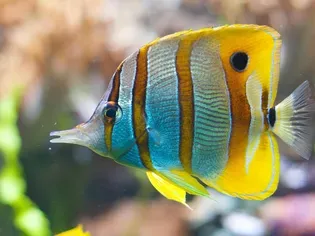Ammonia Burns in Fish
Updated on 04/26/24

Ammonia Burns in Fish: A Comprehensive Guide to Diagnosis, Treatment, and Prevention
Introduction
Ammonia is a toxic substance that can cause severe burns in fish. It is produced as a waste product of metabolism and can accumulate in water if it is not properly removed. Ammonia burns can be fatal if not treated promptly, so it is important to be aware of the signs and symptoms of this condition.
Causes of Ammonia Burns in Fish
The most common cause of ammonia burns in fish is exposure to high levels of ammonia in the water. This can occur due to a number of factors, including:
* Overcrowding: When too many fish are kept in a small space, the ammonia levels in the water can quickly rise to dangerous levels.
* Poor water quality: Poor water quality can lead to the accumulation of ammonia in the water. This can be caused by a number of factors, such as inadequate filtration, overfeeding, and infrequent water changes.
* Fish waste: Fish waste is a major source of ammonia in the water. If the water is not properly filtered, the ammonia levels can quickly rise to dangerous levels.
* Medications: Some medications can also cause ammonia burns in fish. This is because these medications can damage the gills, making them more susceptible to ammonia absorption.
Signs and Symptoms of Ammonia Burns in Fish
The signs and symptoms of ammonia burns in fish can vary depending on the severity of the burns. Some of the most common signs and symptoms include:
* Redness of the gills
* Swollen gills
* Difficulty breathing
* Lethargy
* Loss of appetite
* Skin lesions
* Fin rot
* Death
Diagnosis of Ammonia Burns in Fish
The diagnosis of ammonia burns in fish is based on the signs and symptoms of the condition, as well as the results of a water test. A water test can measure the ammonia levels in the water and help to determine if the fish are being exposed to high levels of ammonia.
Treatment of Ammonia Burns in Fish
The treatment of ammonia burns in fish depends on the severity of the burns. Mild burns can be treated with a simple water change and the addition of a water conditioner. More severe burns may require medication or hospitalization.
Prevention of Ammonia Burns in Fish
The best way to prevent ammonia burns in fish is to maintain good water quality. This can be done by:
* Keeping the tank clean and free of debris
* Performing regular water changes
* Using a good filter
* Avoiding overcrowding
* Feeding the fish a healthy diet
* Monitoring the ammonia levels in the water
Conclusion
Ammonia burns in fish is a serious condition that can be fatal if not treated promptly. By being aware of the causes, signs and symptoms, and treatment options for ammonia burns, you can help to keep your fish healthy and happy.
Explore More Pets

Freshwater Aquarium Filters
How to Deal With Cloudy Aquarium Water

Saltwater Aquarium Filters
How Do You Remove Chloramines From Tap Water?

Freshwater Aquariums & Habitat
Can I Keep My Koi Fish Inside?

Saltwater Aquariums & Habitat
14 Best Floating Plants for Your Aquarium

Freshwater Fish Health
How to Treat Ich on Freshwater Fish

Saltwater Fish Health
Fin Rot in Aquarium Fish

Freshwater Aquarium Filters
How to Do Aquarium Water Changes

Saltwater Fish Health
How Do Fish Get Parasites?